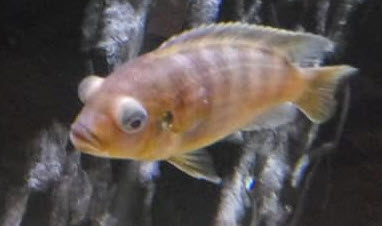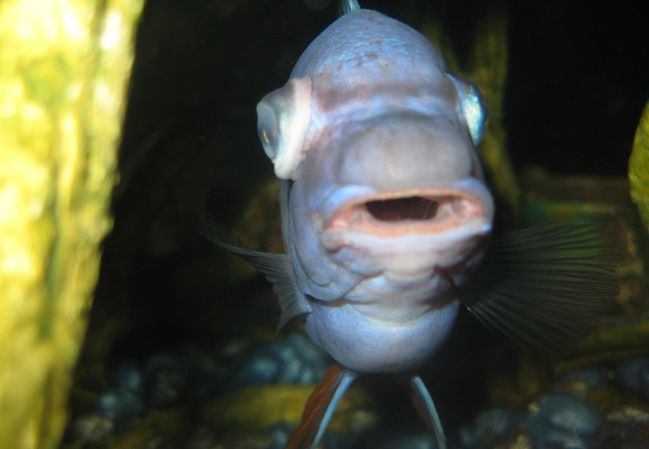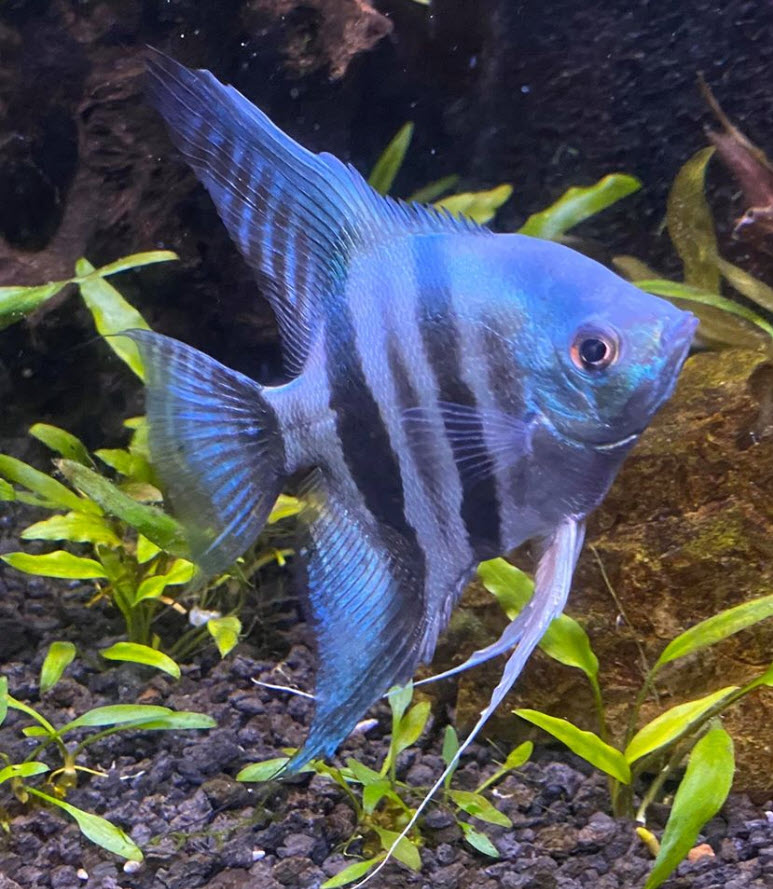
In “Popeye” the fish’s eyes bulge out. Popeye can be caused by many things, injury to the eye, environmental mycobacteriosis, even viruses. But the most common cause is a bacterium called Corynebacterium. This is a gram-positive bacterium best treated with erythromycin (API E.M. Erythromycin, Mardel Maracyn, Thomas Labs Fish Mycin) or penicillin.
These medications are only available over the internet. Fish stores have all gone over to “natural” medications which have a very high profit margin.

Bacterial infections are most effectively treated with antibiotics in the food. Many believe (and the instructions on the antibiotics say!) that antibiotics need to be added to the water. They are simply incorrect. This controversial topic is covered in the following link:
It is easy to make medicated food. Heat 1/4 cup water (two ounces or 58 milliliters, not a lot) in the microwave. Then blend one 1/4 ounce of plain animal derived gelatin (Knox gelatin, one envelope) into the hot water with vigorous stirring. Take two tablespoons of dry commercial fish food (pellets or flake) and mix it with just a little of the hot water/ gelatin mixture. Add hot water/gelatin until you get a paste like consistency. If it gets too watery just add more food.
Then add just a “smidgen” (roughly 1/16 teaspoon, a 1% to 2% addition) of medication to the mud. If you are using more than one medication mix the medications together, then use just a “smidgen” of the mixture. If you are using a packet of medication, take just a “smidgen” of the packet contents. Mix and mash the whole mass thoroughly.
Spread it out into a pancake about 1/8th inch (3 mm) thick on a plastic film or a plate. Then put in the refrigerator. If you plan on keeping it for more than two weeks put it in a small plastic bag and freeze. Note that the exact amount of medication which goes into the food is not very important. Antibiotics can be overdosed pretty much with abandon as they are only toxic in large doses over a period of months.

Antibiotics are FDA approved and used for infections in humans and are very safe at just about any dosage for fish. Getting the exact dosage isn’t important since overdoses are only a problem if the fish are fed it for a significant period of time.
All the infected fish should be fed a steady diet of the antibiotic laced food for at least ten days. If it is one or two fish transfer the fish to a hospital aquarium and treat. If more than two fish have the problem one must treat the whole aquarium. Note antibiotics in the food do not affect the filters so they can be left in place and operating.
It is difficult to predict what will occur with popeye. Sometimes the popeye go down and sometimes they do not go down. A high percentage of the time it is fatal. The fatality rate goes up if both eyes are involved.
If you can’t resist the urge to treat the water, remove the biofiltration media (including sponge and/or foam) in the filters and put it in an open container for the duration of the treatment. Sometimes antibiotics kill the beneficial bacteria and sometimes they don’t. In any case the filter media will denature the antibiotics. Monitor the ammonia and would do a 50% water change if it spikes above 1 ppm. Reduce the amount of food fed by 2/3 rds.
Note that if antibiotics are not available, it is quite easy to take a pill or capsule of human antibiotic and use it for fish. If it is a pill just grind it up. Just be aware that the human antibiotics are about ten times more potent than the aquarium antibiotics, so just a “smidgen” in the food is more than enough. This is a very good option for the folks in Europe or Canada, where fish antibiotics are illegal.
The entire topic of bacterial infections in tropical aquarium fish is covered in more detail in this link:
.
.
Aquarium Science Website
The chapters shown below or on the right side in maroon lead to close to 400 articles on all aspects of keeping a freshwater aquarium. These articles have NO links to profit making sites and are thus unbiased in their recommendations, unlike all the for-profit sites you will find with Google. Bookmark and browse!
.

